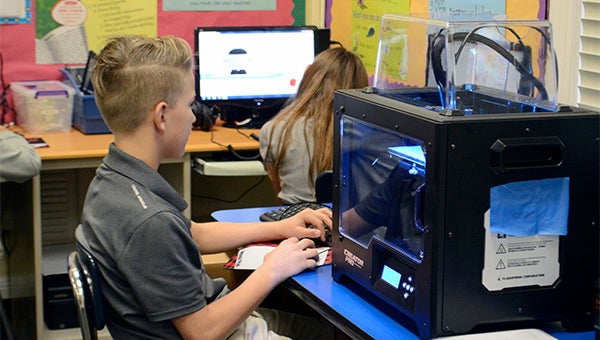Westside students get boost from technology
Published 7:00 am Friday, January 20, 2017

Students in Alicia Verweij’s gifted class are incorporating computer coding skills and a new 3-D printer to enhance their real world learning.
Photo by Julia Arenstam
West Side Elementary gifted teacher Alicia Verweij has made the most of the $2,000 received from the Leo W. Seal Innovative Teacher’s grant this year by incorporating robots and a 3-D printer into her curriculum.
“This grant made West Side Elementary a pioneer in technological engineering for elementary students in our district and our community,” she said.
Verweij said Westside is the only elementary school in the district to have this technology. Picayune Memorial High School’s Career Technology center also has a 3-D printer and the high school has a robotics program.
For her intellectually gifted students, the most difficult challenge is getting them to focus and apply what they learn in school to the real world, Verweij said.
“As a Title I school with a 100 percent free or reduced lunch count, our students are not offered some of the educational exposures that students from more affluent homes and schools are,” she said. “This lack of exposure greatly hinders their learning connections. It is well known that students retain information better when they can make connections to the content knowledge being taught.”
Verweij said her 2nd and 3rd grade students are already learning the basics of using computer coding to operate their robots, while her 4th through 6th grade students are using the 3-D printer to construct models they designed.
Her students have been using a free online coding program for a few years now, she said, but these new tools allow them to build upon what they see on their computers and see how it transitions to real-world applications.
Most often, her students have a desire to know how things work and why, Verweij said.
“This helps them realize the importance of what they’re doing every day,” she said.
For younger students, learning how to program the robots and give them specific instructions helps them learn to communicate better with their peers, Verweij said.
“They start to realize a computer doesn’t have a brain,” she said.
Because her students are so intellectually gifted, “they often assume other people are inside their head and know what they’re thinking,” Verweij said.
When giving instructions to the robot, it’s not as simple as just telling it to turn left, she said; the students have to tell it how many degrees to the left and how far it should walk after it turns.
Older students are learning the process of designing a structure by using math and graph paper, a process that takes weeks before they get to touch the 3-D printer, Verweij said.
“These projects clearly showed how students perform when they can relate to the content and make real life connections,” she said. “The students were offered tools and technology that allowed for a more relevant, engaging, learning experience.”
In some instances, these projects have truly inspired her students to pursue careers in engineering, especially for girls who may not have been exposed to the idea at home, she said.
“I can see the difference since we’ve been doing code.org,” Verweij said.
Her students are connecting the dots between textbooks, fairy tales, math lessons and what goes into a toy company’s designs, she said.
From year to year students are building on these technological concepts, which helps them further down the road, Verweij said.
“They’re smart enough, but sometimes they lack interest so they don’t see the true value,” Verweij said. “Now, we’re giving them the how and the why.”
Her older students are preparing to enter an underwater robotics competition on March 8 against other Gulf Coast schools, she said.



